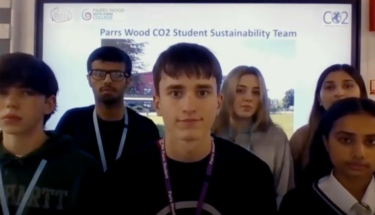Green TV’s Decarbonisation Summit 2021 at the COP26 climate conference


John Dunne
Group Safety, Health, Environment and Quality and Sustainability Director

Our industry is responsible for up to 50% of climate change
According to the Construction Climate Challenge, our sector is responsible for up to 50 per cent of climate change, 40 per cent of energy usage and 50 per cent of landfill waste. And, during week two of COP26, this was the focus of a Green TV panel I attended, alongside other industry experts.
Unpacking the challenges faced by the built environment sector in the drive to net zero, it becomes apparent that there is a huge task ahead. It was encouraging to hear, however, that other panelists were on the same page as me about what is needed if we are to step up the rate of progress. The need for more data and knowledge sharing is critical, as well as greater leadership and collaboration, to leverage the incredible technologies that can help us achieve climate targets.
Lack of data is a fundamental challenge for our industry. We can implement new technologies, but without data to inform our understanding of how and where they will work most effectively, we will struggle to understand which changes will have the most impact, drive efficiencies and give us the best return on investment. Better data leads to better decision making.
Coupled with this, is the need to share knowledge and in doing so encourage collaboration. To give an example, 95% of market ready sustainable technologies never get considered because key decision makers do not know they exist, or suppliers don’t have access to the key corporate decision makers. Promoting smarter solutions to design, construct, and maintain buildings, requires us to bridge that knowledge gap.
Beyond that, we need to see businesses taking a lead and, as a sector, we need to encourage customers to push boundaries. One solution mentioned during the Green TV discussion was mycelium, a material with incredible thermal qualities. But the problem is that even when innovations are unearthed, many go unused because it is hard to get certified or because businesses are nervous about putting their faith in something new.
At Wates, we are doing what we can to solve this issue. Through our Wates Innovation Network portal, we assess the viability of innovations and connect our customers with the solutions to help meet sustainability targets. We are seeing some great examples of what can be achieved, with Lloyds Banking Group already working with suppliers who are at the cutting-edge of sustainable technology.
Ultimately, if we are to limit global warming to that critical 1.5°C above pre-industrial levels, we as an industry need to break new ground. So many of the solutions are out there, but to reduce emissions at scale, we need the data to make sure they are being worked to their best advantage, and we need to see more businesses having the courage to put them into action and lead the way.